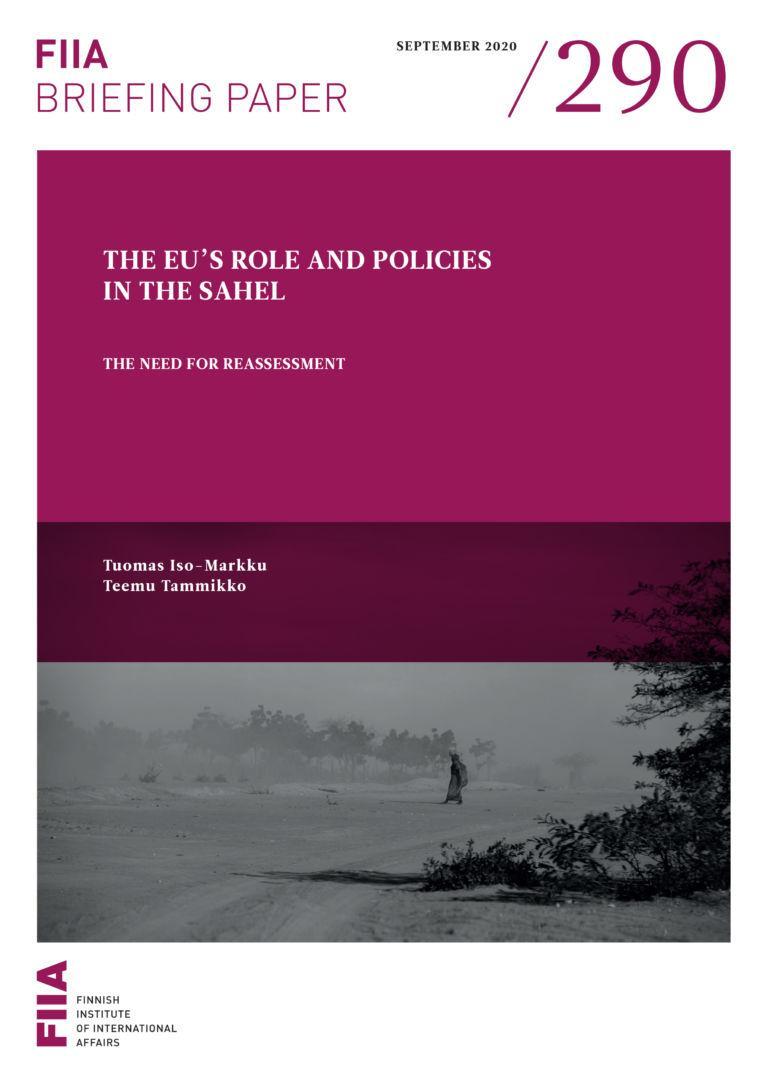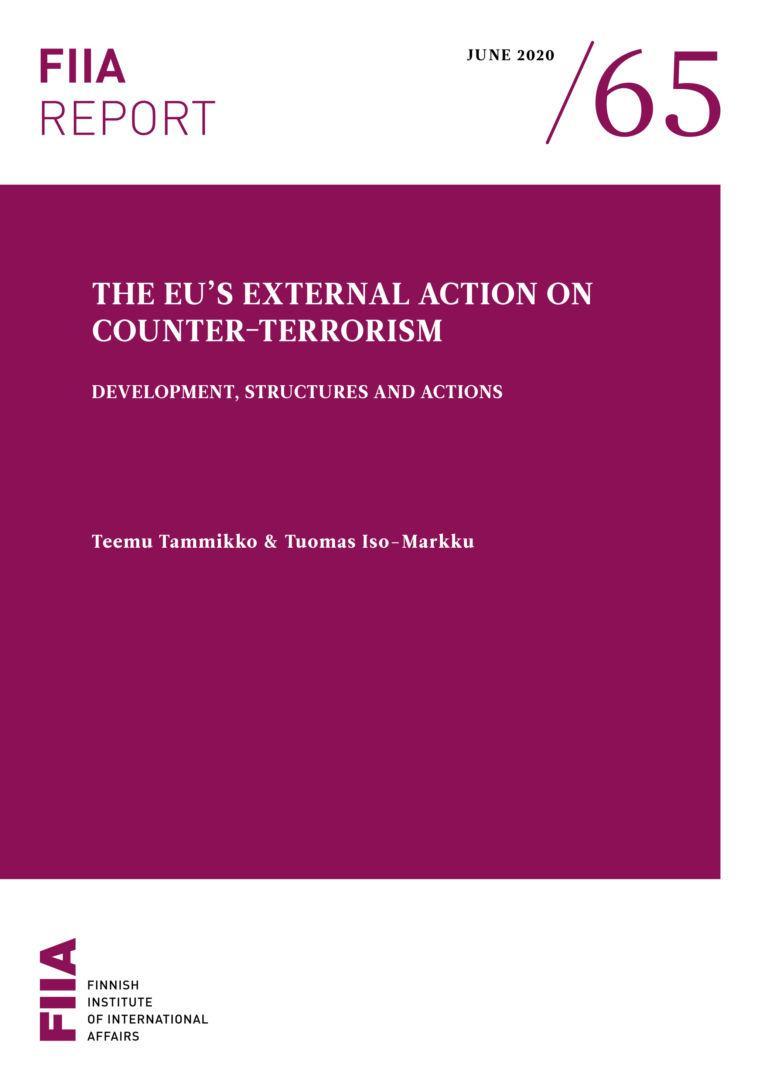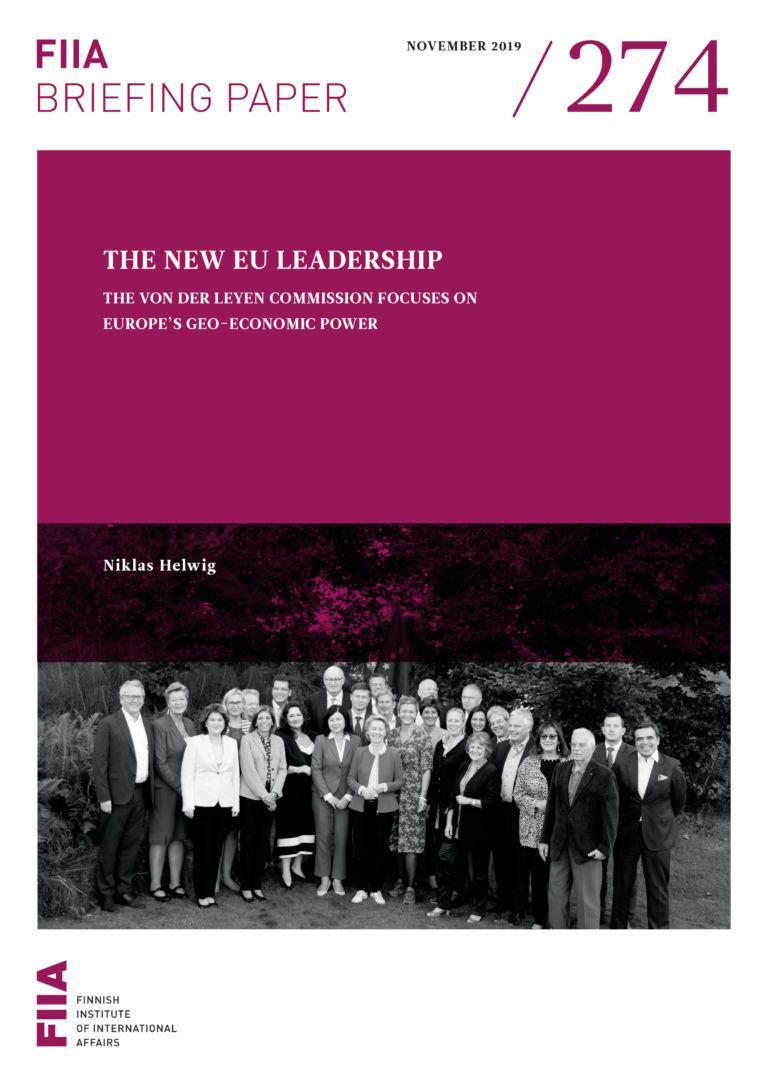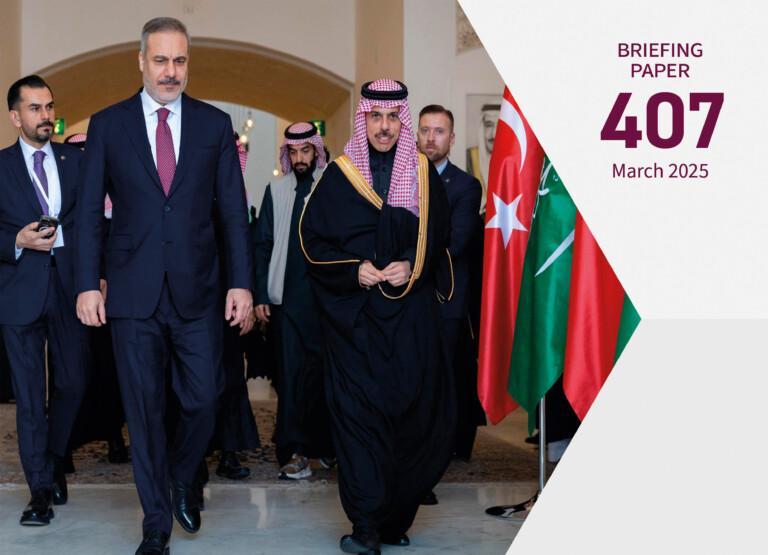- As the EU is looking to strengthen its relations with Africa, the Sahel is set to be among its priorities. For at least a decade, the EU has invested heavily in the region, following a comprehensive but security-focused agenda.
- A worsening security situation and a recent coup d’état in Mali highlight the complexity of the region’s challenges – and call for the EU to reassess its approach.
- Coordination and coherence have long been central challenges for the EU in the Sahel. No quick fix exists, but the EU could consider centralising its analysis, reporting and coordination activities into one hub in the region itself.
- The EU’s approach should also be less state-centric. This would mean supporting regional structures and solutions, but also paying more attention to local dynamics and being less reliant on the central governments.
- Importantly, the EU should carefully review the balance between its short-term and long-term goals, as well as between its own immediate interests and the long-term needs of the region.
Introduction
Readjusting and strengthening relations with Africa is one of the central goals of the new leadership of the European Union (EU). In March 2020, the European Commission published a joint communication to serve as a basis for a new EU Africa strategy.[1]
One region that is set to remain among the EU’s priorities in Africa is the Sahel, which stretches across the southern flank of the Sahara Desert and, in the EU’s view, essentially comprises five states: Mauritania, Mali, Burkina Faso, Niger and Chad. While the Sahel does not directly border the EU, the Union has long stressed that the region’s trajectory is inherently linked to the security of Europe – with the 2015 refugee crisis as well as the spread of Islamist terrorism in the Sahel serving to reinforce this view. As a result, the EU and many of its member states – France in particular – have invested substantially in the region in the past decade, alongside a plethora of other actors. As the EU’s engagement in the Sahel has involved trying out novel approaches and concepts, the region is often seen as a ‘laboratory of experimentation’ for the EU’s external action.[2]
However, the EU, and the international community more broadly, have little to show for their efforts to date, as the Sahel continues to struggle with a vicious circle of challenges, including a significant surge in armed violence. Notably, the states in the region have remained weak, sometimes being part of the problem rather than the solution. The fragility of the situation was most recently exemplified by the events in Mali, where popular discontent with the government led to widespread political unrest, followed by a military coup on 18 August 2020. Thus, as the EU seeks to revamp its relations with Africa, it will also need to reassess its approach towards the Sahel. Indeed, a new strategy for the region is expected in the near future.
This Briefing Paper offers a succinct analysis of the EU’s role and policies in the Sahel, also pointing to some of their shortcomings and presenting ideas as to how the Union could readjust its approach. The paper starts by briefly outlining the current situation in the Sahel, after which it sums up the EU’s approach to the region. The latter half of the paper goes on to analyse the challenges that the EU faces in the Sahel – both in relation to its own approach and the region’s multidimensional crisis. The paper concludes with some proposals for a future EU approach towards the Sahel.
Weak states facing multiple challenges
The Sahel region is currently suffering from multiple challenges, including poverty and a lack of economic prospects, food insecurity, rapid demographic growth, inter-communal conflicts, terrorism and climate change – although it is important to note that these affect different parts of the region to varying degrees. The challenges are linked and mutually reinforcing, which adds to the complexity of the situation. For example, food insecurity – aggravated by rapid demographic growth and climate change – fuels inter-communal tensions, which are exploited by Islamist insurgents for recruitment, and stoked up by their presence.[3]
[caption id="attachment_103080" align="aligncenter" width="750"] Map: the Sahel region.[/caption]
Map: the Sahel region.[/caption]
In recent years, the security situation in the Sahel has constantly deteriorated. In the three worst-hit states, Burkina Faso, Mali and Niger, over 4,000 deaths in relation to armed attacks – perpetrated by Islamist terrorists, but also by other armed groups and state security forces – were reported in 2019 alone, and more than 900,000 people were estimated to be internally displaced due to the violence.[4] While the level of violence is a problem in and of itself, it is also deeply connected to the other challenges facing the region, both feeding off and nourishing them. The Covid-19 pandemic is an additional uncertainty factor.
From the EU’s point of view, a crucial difficulty in addressing these challenges is that the states in the Sahel are weak and fragile. Not only are they unable to meet the basic needs of their population, but they do not have a ‘monopoly on violence’ in their territories. One reason for this is that the borders in the region, inherited from colonial times, do not correspond with the social or economic realities on the ground. In practice, the presence of the state is highly uneven, and the citizens of one state can live under very different conditions. At the same time, there are strong links across the region’s borders, as different transnational activities – including trade, transhumance, but also illicit trafficking – traditionally provide a livelihood for the people in the Sahel.
The uneven presence of the state does not mean that vast areas of the Sahel are ungoverned. Instead, there are alternative governance structures, ranging from criminal structures to rivalling political structures, and structures that are somewhere between the state and non-state.[5] These structures often perform some of the functions that the state is unable to fulfill, thereby aiming to gain support and legitimacy at the local level. In recent years, communities and regions along the borders between Mali, Burkina Faso and Niger have been particularly affected by the increasing presence of Islamist terrorists and other armed actors. Terrorism – like most of the major challenges facing the Sahel states – duly has both a regional and a local dimension.
Overall, the Sahel states and the other actors present in the region face a difficult situation in which they need to tackle several highly complex challenges more or less at the same time. Moreover, these need to be addressed at the right level, some requiring local solutions and others calling for broader cooperation above and beyond the state.
The EU’s comprehensive, but security-driven approach in the Sahel
The Sahel was the first region in Africa for which the EU formulated a dedicated regional strategy in 2011.[6] The strategy originally focused on just three Sahel countries, Mali, Mauritania and Niger, but in 2014 the Council called for it to be extended to Burkina Faso and Chad as well. In 2013, a dedicated EU Special Representative (EUSR) was appointed for the Sahel region and in 2015 a regional action plan for the years 2015–2020 was adopted to complement the Sahel strategy.
While the EU was already engaged in the Sahel through development cooperation, the 2011 strategy stressed the need to deal with the region’s challenges in a more holistic manner, particularly by strengthening the nexus between security and development. Accordingly, the Sahel is a region where the EU has tried to put its highly touted ‘comprehensive approach’ and, later, the so-called ‘integrated approach’ into practice, taking advantage of the full breadth of its external policy palette. In the Sahel, this includes diplomacy, development cooperation, the Common Security and Defence Policy (CSDP) and, most recently, the external dimension of the EU’s Area of Freedom, Security and Justice (AFSJ).
A second notable aspect of the 2011 Sahel strategy was its emphasis on the interests of the EU. The strategy underlined that improving security and development in the Sahel is not only in the interests of the Sahel states themselves, but also has an ‘obvious and direct impact on protecting European citizens and interests and on the EU internal security situation’. In many ways, the Sahel strategy thus foreshadowed a broader turn in the EU’s external action – most clearly expressed in the 2016 EU Global Strategy – with an increased focus on using the EU’s external policy instruments to safeguard the Union’s internal security. Consequently, the EU’s engagement in the Sahel has clearly been driven by those issues that the Union sees as most relevant for itself: crime, terrorism and migration.
Thirdly, the Sahel is a region where the EU has applied the idea of ‘principled pragmatism’ even before the concept was formally introduced in the 2016 Global Strategy. Principled pragmatism means reconciling the EU’s values, such as democracy and human rights, with the Union’s interests, including stability and resilience. In view of the latter, a core EU activity in the Sahel has been to build the capacities of the Sahel states’ security forces – above all with a view to countering terrorism and organised crime and, later, curbing irregular migration.
At the heart of the EU’s capacity-building efforts in the Sahel are its three CSDP missions: EUCAP Sahel Niger, EUCAP Sahel Mali and EUTM Mali. The first two are civilian missions that focus on building the capacities of the two states’ internal security forces, and the third is a military mission for training and advising the Malian armed forces as well as the G5 Sahel Joint Force (G5JF), an internationally supported joint military force of the five Sahel states. While all three CSDP missions involve elements related to human rights and/or good governance, in practice they are more geared towards meeting the immediate security needs of the Sahel states and the EU.[7] Tellingly, in the context of the 2015 refugee crisis, both EUCAP Sahel Niger and EUCAP Sahel Mali were reoriented towards supporting the national authorities in border and migration management tasks. This move also paved the way for stronger involvement by AFSJ actors, especially Frontex, in the Sahel. Hence, all in all, the EU’s comprehensive approach towards the Sahel is notably tilted towards security issues and solutions.
However, while its approach is security-driven, the EU’s own role as a security actor remains limited. None of the three CSDP missions in the Sahel has an executive mandate. Moreover, they are relatively small, with their combined personnel totalling less than 1,000. By comparison, the United Nations MINUSMA operation in Northern Mali has more than 15,000 personnel, France’s Barkhane more than 5,000 and the nascent G5JF – with significant funding from the EU – 5,000. Thus, the primary responsibility for security and military action lies with other actors.
Finally, development cooperation continues to form a key part of the EU’s comprehensive approach towards the Sahel, with the Union and its member states channelling significant amounts of development funding to the region through different instruments. However, even here, an increasing emphasis on projects related to migration, terrorism and crime can be noted – facilitated, in part, by the establishment of the EU Emergency Trust Fund for Africa (EUTF) as a flexible funding tool for such purposes.
The persistent challenge of coordination
Numerous regional and international actors have involved themselves in the development and stabilisation efforts in the Sahel. For this reason, coordination has long been a crucial challenge. To facilitate coordination, different Sahel-related platforms have been established, but the field remains confusing at best. The last four years alone have seen the creation of three different frameworks: the Sahel Alliance, established by France, Germany, the EU, the African Development Bank and the United Nations Development Programme in 2017; the Partnership for Security and Stability in the Sahel, initiated by France and Germany in 2019; and the Coalition for the Sahel, launched by France and the five Sahel states in 2020 and intended to absorb some of the earlier platforms.[8]
While the EU needs to coordinate its approach with a number of external partners, internal coordination remains a Herculean task as well. Apart from the EU as an entity, a growing number of EU member states is actively involved in the Sahel – through the EU, other structures, as well as on their own. The most important of these is France, which has its own counter-terrorism-focused military operation – Barkhane – on the ground, is behind several Sahel-related initiatives, and has long pushed the EU and the other member states to adopt more responsibility for the region – recently with increasing success. While the EU’s and the member states’ efforts are generally presented as complementary, the extent to which they are coordinated with each other varies.
Even if the member states are largely left out of the picture, the number of involved EU actors remains high both in Brussels and in the Sahel itself, complicating the implementation of an ‘integrated approach’. Apart from the member states, working through the Council and its sub-bodies, the EU’s Sahel policies are primarily shaped by the European External Action Service (EEAS) and the Commission’s Directorate General for International Cooperation and Development (DG DEVCO). Their relationship has traditionally been marked by an element of competition, with both following different rationales and seeking to assert their authority. However, these tensions seem to have subsided somewhat, with the EEAS steering the EU’s overarching strategy in the Sahel and DG DEVCO playing a key role in the management and implementation of the Union’s development instruments.[9] In addition to the two, different AFSJ actors, above all Frontex, show a growing interest in the Sahel.
In the region itself, the EU is represented through the EUSR, four EU delegations, the three CSDP missions, a Regional Advisory and Coordination Cell (RACC) as well as partner organisations implementing development projects. Moreover, Frontex maintains a liaison officer and a Risk Analysis Cell in Niger. While contacts between the different actors on the ground are reported to have improved, limited exchange of information, different organisational cultures, overlapping tasks as well as the lack of clear – and shared – strategic guidelines continue to hamper the EU’s engagement.[10]
The shortcomings of a state-centric approach
Among the myriad actors in Sahel, the most important partners of the EU continue to be the five states of the region, whose capacities the Union seeks to build – both in the security sector and more broadly. However, while the fragility of the states is undeniably a problem, there are good reasons for the EU to avoid too state-centric an approach.
First, most of the major challenges facing the Sahel have a transnational dimension. Therefore, addressing them requires regional cooperation, as the EU and other actors have long acknowledged. The G5 Sahel, a framework bringing together the five Sahelian states, has emerged as the most prominent regional cooperation structure, entailing both a security component, the G5JF, and a development component. While potentially important, the organisation is still in its infancy. Moreover, the current situation in the region – including the territorial expansion of Islamist groups – calls for an even broader approach, encompassing the West African coastal states. This underlines the role of established regional structures such as the African Union (AU) and the Economic Community of West African States (ECOWAS).
The EU has also sought to reinforce the regional dimension of its own approach. This has involved, amongst other things, the setting up of the RACC to improve coordination between the CSDP missions, EU delegations and the G5 Sahel structures. In a similar vein, the area of operations of EUTM Mali has been extended to cover military assistance to all G5 Sahel countries. However, these steps are limited in scope – and the extent to which they can contribute to regional solutions remains unclear.
Secondly, while the regional dimension is important, there is a pressing need for a greater understanding of, and sensitivity towards, sub-regional and local dynamics. As discussed, the Sahel states encompass widely varying realities, with different regions being affected by the multidimensional crisis in different ways and to a different degree. Moreover, due to the functionally and territorially limited presence of the state, there are often important local stakeholders and structures that need to be taken into account and, if possible, integrated into the development, governance and stabilisation efforts.
This points to another important issue: although the EU is right in working together with the Sahelian governments and authorities, its approach should be more diverse. This is particularly pertinent against the background of the recent events in Mali. The political unrest there is indicative of how the worsening situation in the Sahel has further eroded the already limited political legitimacy of the region’s governments (and some international actors). It is important for the EU to remain responsive to such sentiments, seeking – where possible – to channel them into achieving much-needed governance reforms.
Overall, it remains clear that the Sahelian state authorities will be key intermediaries and partners for the EU also in the future – both bilaterally and in the context of regional organisations. However, the Union would do well to gear its approach more strongly towards the region’s citizens and societies.
The difficult balancing between short-term and long-term objectives
In its approach towards the Sahel, the EU has stressed the interdependence between security and development. Moreover, the EU’s policies have sought to advance both the long-term stability of the region as well as the Union’s own immediate security interests. The EU's different objectives in the Sahel are usually presented as being mutually supportive, but in practice this may not always be the case. In part, this is related to the persistent issues of coordination and coherence described above. However, even more importantly, the EU’s emphasis on its own short-term interests has, in some cases, led to choices that are not conducive to the long-term stability of the region.
This is primarily the case for the EU’s efforts to clamp down on irregular migration through the Sahel by strengthening the capacities of local border authorities and incentivising them to impose stricter controls on border traffic, especially in Niger. While these efforts have reduced the number of irregular migrants, they have also had unintended consequences for the target regions, which have been only partially offset through specific EU projects. Above all, the measures have undermined the local economy in the border regions, thereby creating additional social pressure and leading to an increase in other types of illegal activities.[11]
Mali’s military coup, for its part, casts a shadow over the EU’s capacity-building efforts in the Sahel. As a first reaction, the EU suspended its CSDP missions in the country, although the suspension is only meant to be temporary. The coup – together with reports of an increasing number of extrajudicial killings by state security forces in Mali, Niger and Burkina Faso – shows that the scope of the CSDP activities in the Sahel states needs to move beyond training and equipping state security forces, targeting deeper reform in the culture, organisation and practices of the security sector. This will not be easy, as there is resistance to reform within the governments and the national security apparatuses.[12] However, the current course is untenable in the longer run.
Overall, the EU should carefully consider the balance between its short-term and long-term goals – as well as its own immediate interests and the long-term needs of the region. This does not mean juxtaposing security and development, as it is clear that the Sahel needs both. However, the EU needs to evaluate which of its policies are producing sustainable results – and how to best combine them.
Conclusions
This paper calls for the EU to reassess its approach towards the Sahel region, where the situation has worsened despite increasing engagement by the Union and the international community more broadly. While the EU is not to blame for the negative trends in the Sahel, the Union should critically review its own engagement in the region.
This paper has pointed to some challenges and shortcomings related to the EU’s current approach. First, limited coordination and coherence have long hampered the EU’s efforts in the Sahel. While the EU’s approach envisions the effective use of all of the Union’s external policy tools, in practice there is still much room for improvement. One option for the EU would be to centralise its analysis, reporting and coordination activities into one hub in the region, which could contribute to joint situational awareness in Brussels and on the ground, prevent the loss of information, and provide strategic guidance for the actors in the field. The hub would thus follow the logic of the RACC, but extend its scope beyond the CSDP missions.
Secondly, the EU should pay more attention to local dynamics – taking advantage of its diverse presence in the Sahel and, if need be, strengthening it. This is particularly important considering the limited reach of the central governments and the presence of alternative governance structures in the region. Understanding local dynamics would also help the EU gear its approach more strongly towards the needs of citizens and societies in the region.
Finally, the EU should carefully review the balance between its short-term and long-term goals – as well as its own interests and the long-term needs of the region. Striking the right balance is only possible through careful strategic analysis and planning, involving all relevant stakeholders within and beyond the EU, again underlining the importance of coordination. Moreover, this would require the EU to put more effort into assessing the impact of its policies.
Endnotes
[1] European Commission (2020), Joint Communication to the European Parliament and the Council: Towards a comprehensive Strategy with Africa, JOIN(2020) 4 final, Brussels 9 March 2020.
[2] Lopez Lucia, Elisa (2017), “Performing EU agency by experimenting the ‘Comprehensive Approach’: the European Union Sahel Strategy”, Journal of Contemporary African Studies.
[3] See e.g. Berger, Flore (2019), Jihadist violence and communal divisions fuel worsening conflict in Mali and wider Sahel, IISS, 20 June 2019, https://www.iiss.org/blogs/analysis/2019/06/conflicts-in-mali.
[4] Dewast, Louise (2020), How West Africa is under threat from Islamist militants, BBC News, 13 January 2020, https://www.bbc.com/news/world-africa-51061229.
[5] Bøås, Morten (2015), “Crime, coping, and resistance in the Mali-Sahel periphery”, African Security, 8 (4): 299-319; Toros, Harmonie (2019), Informal governance of non-state armed groups in the Sahel, NSDS HUB/University of Kent, October 2019.
[6] European External Action Service (2011), Strategy for Security and Development in the Sahel.
[7] See e. g. Venturi, Bernardo (2019), An EU Integrated Approach in the Sahel: The Role for Governance, IAI Papers 19/03, February 2019; Lopez Lucia, Elisa (2019), The European Union Integrated and Regionalised Approach Towards the Sahel, A Stabilizing Mali Project Report, UQÀM, February 2019.
[8] Lebovich, Andrew (2020), Disorder from Chaos: Why Europeans Fail to Promote Stability in the Sahel, European Council on Foreign Relations, August 2020.
[9] Lopez Lucia 2019.
[10] Lopez Lucia 2019; Pye, Katherine (2019), A Means to an End or an End in Itself? The EU Integrated Approach to Conflict in Mali, EU Diplomacy Papers 5/2019, College of Europe.
[11] See e.g. Comolli, Virginia (2019), Niger: Curtailing migration has unintended consequences, The Africa Report, https://www.theafricareport.com/19517/niger-curtailing-migration-has-unintended-consequences/; Bøås, Morten (2020): EU migration management in the Sahel: unintended consequences on the ground in Niger?, Third World Quarterly, https://doi.org/10.1080/01436597.2020.1784002.
[12] See e.g. Tull, Denis M. (2020), The European Union Training Mission and the Struggle for a New Model Army in Mali, IRSEM, 11 February 2020.








